Although the Lanimer Celebrations consist of nearly a week long series of events Lanimer Day itself falls on the Thursday between the 6th and 12th June each year. The only exceptions to this rule being when the powers that be call some sort of election that clashes with the traditional date. In such cases the events are organised for the following week.
In the past these celebrations have been referred to under several names – Landemuir day, landemuris, Landmarches, Ryding of the Merches, etc. All are versions or corruptions of Land Marches. When the Crown established Royal Burghs, as part of the contract, the burgesses of the town had to examine the march stones every year and report that all was well or ill according to what they found. The checking of Lanark’s March Stones is the source of today’s much expanded celebrations.
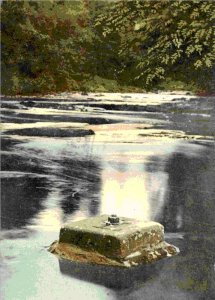
One of Lanark’s March Stones
Lanark is one of the oldest Royal Burghs in Scotland, its Charter being granted by King David I (1124-1153). Lanark may be unique in being the only Burgh that has checked its boundaries each year since it was established c.1140. In 1588 the Burgh records describe the Lanimers as being ‘ancient and yearly’. The checking of such bounds was taken seriously by the Crown. Rutherglen was in trouble about 1581 for not carrying out this required duty. A report on Lanark’s boundaries is still sent to the Crown.
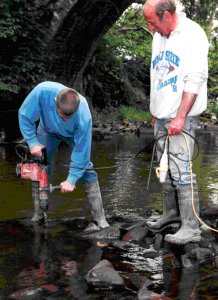
Masons installing a new stone, 2000
Today there are 15 march stones situated at various points around the burgh lands a few of which are relatively new being replacements for those “lost” over the years. Most of the replacements were installed to mark the Millennium.
What started as a simple duty soon turned into an annual festival, “The Lanimers”. Originally all the events were packed into Lanimer Day but gradually during the late 19th and early 20th Century the celebrations began to expand to fill the whole week. What started as a “business practice” carried out by paid officials of the Town Council, had by the 17th century evolved into a more enjoyable affair with the burgesses vying with each other for the honour of carrying the Burgh Standard on Lanimer Day. The person appointed for the year became known at first as the Standard Bearer, then as the Cornet and is nowadays most often referred to as the Lord Cornet.
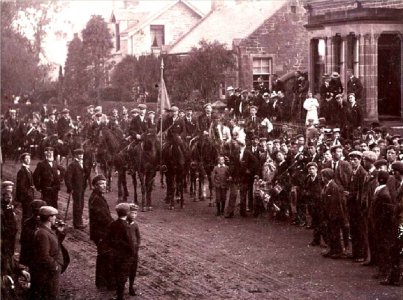
Lord Cornet Angus Mitchell, 1900 with the Burgh Standard
The office of Lord Cornet is of ancient origin its holder having important duties to carry out in relation to the maintenance of the burgh boundaries. The first named Standard Bearer appears in print in 1670 – one John Aitkein. These days he is also charged with representing the town at similar festivals throughout the Borders and the West of Scotland.
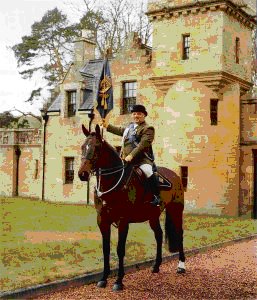
The Lord Cornet 2005
Until 1834 the Town Council and Deacons of Crafts took it in turns to make the appointment. From 1834 – 1974 the Provost & Magistrates made the decision and since 1974 a Committee has chosen the Lord Cornet, that group comprising the Chairman of the Lanimer Committee, the Dean of the Guildry, the two local authority Councillors for Lanark, the Chairman of the Community Council and a representative from the Lord Cornets’ Club.
Whilst the duty of inspecting the land march stones would originally have been a simple matter, as years went by the process was elaborated upon and became more festive in nature with more people becoming involved. Processions, with decorated vehicles started in the 19th Century as part of the Lord Cornet’s Procession and over time gradually developed into the colourful affair that we have today.
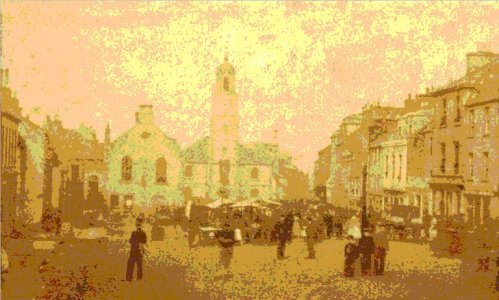
Lanimer Day 1872
In 1892 the first of two major innovations took place. A recently re-organised Lanimer Committee decided to seek the involvement of more people in the celebrations. A sub-committee was formed to approach the Masters of the local schools with a view to involving children. They were also to approach the managers of the weaving mills at New Lanark and Kirkfieldbank to request the presence of workers. The extra effort and preparations resulted in about 700 children being turned out for the procession, the first time large numbers had participated.
The following year saw the introduction of a Lanimer Queen and her court complete with costumes and a crowning ceremony closely based on that of Queen Victoria’s. This innovation proved to be a huge success and over 1,000 children took part on Lanimer Day along with numerous apprentice tradesmen with banners and emblems of their trade.
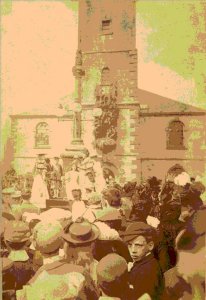
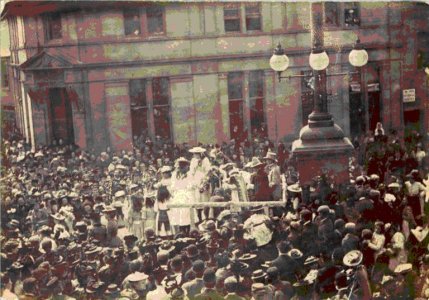
Crowning the first Lanimer Queen June 1893
The first Lanimer Queen was Grace Adams a daughter of a local joiner. The Lanimer Queen is still elected annually by her peers, in rotation from six schools, Lanark Grammar School, Robert Owen Memorial Primary School, Lanark Primary School, St Mary’s Primary School, New Lanark Primary School and Kirkfieldbank Primary School.
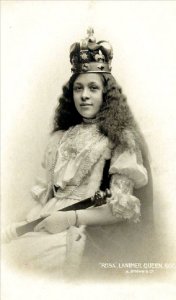
Lanimer Queen 1907, Maria Minchella

Lanimer Queen 1998, Claire McMillan